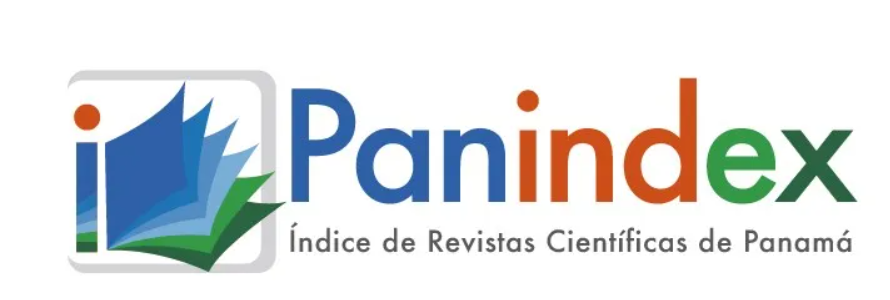The content of the publications and the links suggested in them are the sole responsibility of the authors and not of the METROPOLITAN UNIVERSITY OF EDUCATION, SCIENCE AND TECHNOLOGY (UMECIT) or CATHEDRA magazine. They are protected by international copyright laws just as the UMECIT and CATHEDRA logos, hence their reproduction is totally prohibited
This work is licensed under a Creative Commons Attribution-NonCommercial-NoDerivatives 4.0 International License.
The authors maintain the copyright and transfer the right of the first publication to the journal, with the article registered with Creative Commons Attribution-NonCommercial-NoDerivatives License, which allow others They can download the works published in this magazine and share them with other people, as long as their authorship is recognized, but they cannot be changed in any way nor can they be used commercially.
Authors are recommended to include their work in social networks such as Researchgate and institutional repositories once the article or visible fact has been published on the journal page, without forgetting to include the digital document identifier and the name of the journal.



Abstract
Massive disasters lead human beings to experience a difficult situation to deal with. There are some people who are more vulnerable than others to experience and overcome the consequences left by an event of this magnitude, which brands the man for the rest of his life. When chaos of these occurs, the families of missing or linked to the event, are the first to want an answer as soon as possible with high hopes, by rescuers. Forensic dentists are special part in these multidisciplinary teams work, and are very useful for identifying people. Your valuable identification is due to the extraordinary strength of the teeth to the agents that cause the destruction of the soft parts of the body. The collaboration of the family and the multidisciplinary team help antemortem data collection, which can be located and supplied, to be able to compare with the tragedy collected postmortem. The formation of a group to manage massive disaster situations can be variable from one country or region and event to event. It is very necessary and essential to conduct a subsequent feedback to the completion of the work, thus, to improve the aspects that have been deficient.
Keywords
References
BRANNON RB, DDS, MSD; MORLANG WM, DDS; SMITH BC, DDS. (2003) The Gander Disaster: Dental Identification in a Military Tragedy. J Forensic Sci. Vol. 48 N°6: 1331-1335.
BRANNON RB, DDS, MSD; MORLANG WM, DDS. (2002) Jonestown Tragedy Revisited: The Role of Dentistry. J Forensic Sci; 47(1):3-7.
CARRERA CARBAJO 1. (2003) Identificación de cadáveres y aspectos forenses de los desastres. Brigada de Policía Científica.
FREGEAU CH.J, Ph.D.; VANSTONE H; BORYS S M. Sc.; McLEAN D, B. Sc.; MAROUN JA, M. D.; BIRNBOIM HCh., M. D., M. Sc.; AND FOURNEY RM, Ph. D. (2001) AmpF?STR Profiler PlusTM Analysis of Tissues Stored in GenoFixTM, a new Tissue Preservation Solution for Mass Disaster DNA Identification. J Forensic Sci. ; 46(5): 1180-1190.
GALVAO MALTHUS. (2001) Identificación positiva por medio de radiografías periapicales. Facultad de Medicina-Legal, Departamento de Patología. Universidad de Brasilia-Brasil.
GONZÁLEZ PÉREZ , J. y BASANTA MONTESINOS, A. (2003) Master en Medicina Forense. 18 Grandes Catástrofes. Problemas Médico-Forenses. 1 ra Edición. Vniversitat Do Valencia.
GOODMAN NR, DDS; EDELSON LB, DMD. (2002) The Efficiency of an X-Ray Screening System at a Mass Disaster. J Forensic Sci; 47(1): 127-130.
KIRK NJ, DDS; WOOD RE, DDS MSc, PhD, FRCD(C); GOLDSTEIN M, BSc, DDS. (2002)
Skeletal Identification using the Frontal Sinus Region: A Retrospective Study of 39 Cases. J Forensic Sci; 47(2): 318-323.
MARTIN-DE LA HERAS, S. MD, PhD, BDS; VALENZUELA, A. MD, PhD, BDS; VILLANUEVA, E. MD, PhD; MARQUES, T. MAJOR; EXPOSITO N, LT; BOHOYO, JM. LT. (1999) Methods for Identification of 28 Burn Victims Following a 1996 Bus Accident in Spain. J Forensic Sci; 44(2): 428-431.
LUZ, Mary , NIÑO CÓRDOBA, Esperanza. (2009) Manual Identificación de Cadáveres en la Práctica Forense. Instituto Nacional de Medicina Legal y Ciencias Forenses. Bogotá, Colombia.
McGIVNEY JAMES, DMD. (1998-2001) WinID3 for Windows. Version 3.3.2 Copyright © 1998-2001.
NAVARRO MACHADO, V.; RODRÍGUEZ SUÁREZ, G y FALCON HERNÁNDEZ A, ORDUÑEZ GARCIA PO, FERRAR, Iraola. (2000) Atención de víctimas en masa. Propuesta de un sistema por tarjetas de funciones. Hospital Universitario "Dr. Gustavo Alderaguia Lima". Revista Cubana de Estomatología. Cienfuegos, Cuba.
Plan Nacional de Respuesta a Emergencia. Sistema Nacional de Protección Civil (SINAPROC). Versión Actualizada 2008, República de Panamá.
PRETTY ]A, WEBB DA, SWEET D. (2001) The design and Assessment of Mock Mass Disasters for Dental Personnel. J Forensic Sci; 46(1):74-79.
PRETTY IA, BDS, M. Sc; WEBB DA, M. Sc; SWEET D, DMD Ph. D. (2002) Dental Participants in Mass Disasters-A Retrospective Study with Future Implications. J Forensic Sci; 47(1):117-120.
RENO, Janet, MARCUS Daniel, LOU LEARY Mary, SAMUELS, Julie E. (2000) A Guide for Explosion and Bombing Scene Investigation. U.S Department of Justice. Office of Justice Programs. National Institute of Justice.
SUÁREZ, Toribio. (1994) AMERICAN RED CROSS. Como Ayudara los niños a enfrentar traumas. Diciembre. Cuba.
SUÁREZ, Toribio, SOTO IZQUIERDO, H. (1995) La estomatología forense en situaciones de
desastres. Instituto de Medicina Legal. Revista Cubana de Estomatología, enero junio.
TROUBOUL H, Alberto. Importancia de la odontología forense en la identificación de víctimas.
Desastres de masa. Universidad Católica de Salta —Argentina.
WILLIAMS ED, CREWS JD. (2003) From Dust to Dust: Ethical and Practical Issues Involved in
the Location, Exhumation, and Identification of Bodies from Mass Graves. Croatian Medical Journal.44(3):251-258.
WEBB DA, B.Sc, M. Sc; SWEET D, DMD Ph D; PRETTY IA, BDS, M. Sc. (2002= The Emotional and Psychological Impact of Mass Casualty Incidents on Forensic Odontologists. J Forensic Sci; 47(3):539-541
Downloads
Publication Facts
Reviewer profiles N/A
Author statements
- Academic society
- Universidad Metropolitana de Educación, Ciencia y Tecnología
- Publisher
- Universidad Metropolitana de Educación, Ciencia y Tecnología




















